Predictions for Ecommerce Trends Through 2020
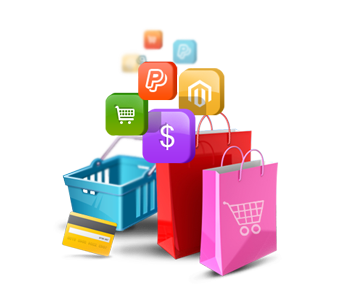
Predictions for Ecommerce Trends Through 2020
Ecommerce has evolved dramatically in the span of merely two years. Between 2013 and 2015, the number of orders placed surged, while behavior patters changed. For instance, with the increasing use of smartphones and tablets, purchases are now taking place around the clock. The need to manage inventory, while providing a large assortment of offerings, has become more challenging. Here are some trends that could underline the evolution of ecommerce from 2016 to 2020.
US Ecommerce Sales
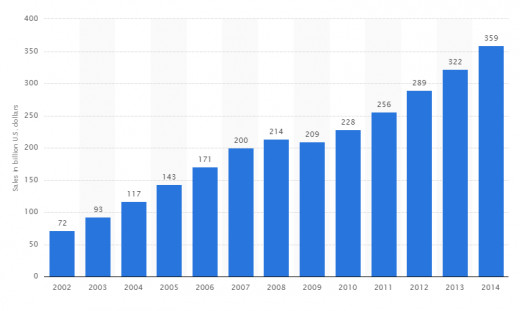
Some Retail Sectors Will More Prominently Shift to Ecommerce
It comes as no surprise that an increasing number of brick and mortar retailers would have ecommerce options. However, the prediction for 2020 is that these retailers would substitute their offline presence with purely online businesses. This trend is expected to vary significantly among the different sectors. Brick and mortar retailers of consumer electronics, books, audio and video would be replaced by digital offerings, according to a report titled Trends in Retail 2020 published by KPMG.
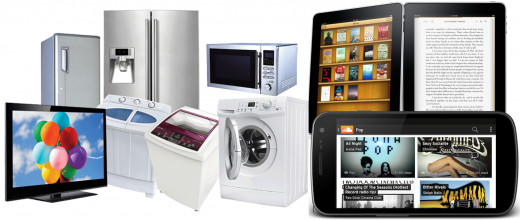
Ignore China and… Die
By 2014, China had already become the world's largest ecommerce market, with its size reaching $458 billion. Yes, China is already bigger than the US, which recorded online sales of $297 billion in 2014.
By 2020, China is predicted to have more than 890 million online shoppers, more than doubling from the number in 2015. The ecommerce market is projected at 13.913 trillion yuan in 2020, growing more than three times the 2015 figure, according to an article published by Kantar China Insights in July 2015. Therefore, no online retailer would be able to ignore China and be successful.
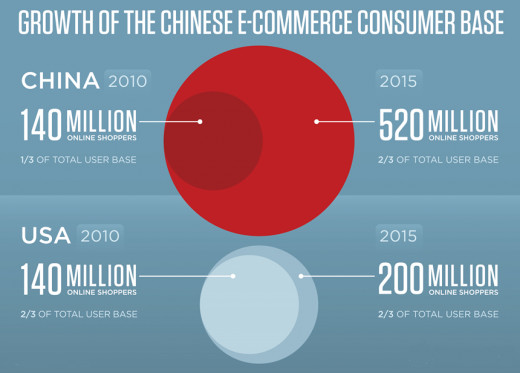
Rising Importance of User Experience Offered by Ecommerce Websites
When the ecommerce trend began, consumers aimed at getting a price advantage. As the space grew, consumers were attracted by the larger assortment as well as the convenience of shopping online. By 2020, price, assortment and convenience would be taken for granted – the basics that any ecommerce service would have to offer, says a blog by Boss Fulfillment.
Competitive advantage would increasingly be defined by the services and user experience offered. Highly customized devices have already gained importance, says a blog by Pinig Tech. In the future, user experience could be defined by the extent of personalization, like a grocery site knowing that a customer is allergic to prawns, the packaging bearing the name of the customer and the customer being able to upload her own picture to see what a dress would look like on her, according to an article by Website2Market.com.

Growth in B2B Ecommerce
While the word “ecommerce” brings to mind the picture of someone relaxing on a sofa at home and browsing through shirts or smartphones. While the B2C (business to consumer) space has received a great deal of attention, the B2B (business to business) space has largely been ignored. By 2020, this would change dramatically. An increasing amount of business procurement would take place online, with significant advancements in technology.
B2B ecommerce sales in the US is expected to grow from $780 billion in 2015 to above $1 trillion in 2020, according to a report by Forrester Research titled U.S. B2B E-Commerce Forecast: 2015 to 2020. The same report projected that businesses purchasing a majority of their work-related goods and services online would grow from 30% in 2015 to 56% in 2017.
Prediction 2020: US Ecommerce Share in Total B2B Sales
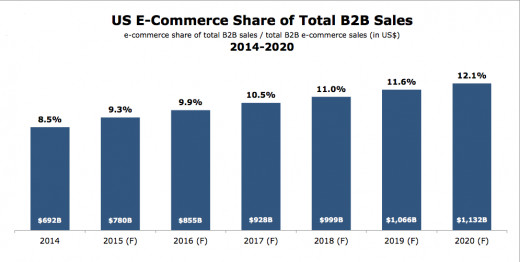
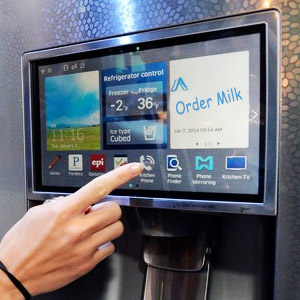
Integration of Devices
In 2014 and 2015, there was a shift from online shopping on PCs and laptops alone to items also being purchased with the use of smartphones and tablets. By 2020, ecommerce is expected to spread to almost every device you own. Leading companies are already investing huge sums of money into the Internet of Things, or IoT.
This includes your refrigerator being able to track that you are low on eggs and milk, and be able to place an order for them at your preferred grocery website. There could be a sensor in your room that would know when your moisturizer bottle is almost empty and place an order at your preferred cosmetics site.
Delivery by Drones
In 2014, Amazon announced that it was working on realizing a drone-based delivery service. This initiative, known as Amazon Prime Air, could have products reach a consumer’s doorstep merely half an hour after the placement of an order. By 2020, this technology is expected not only to become a reality, but to be used by a large number of drop shipping providers, says a report by Barclays.







